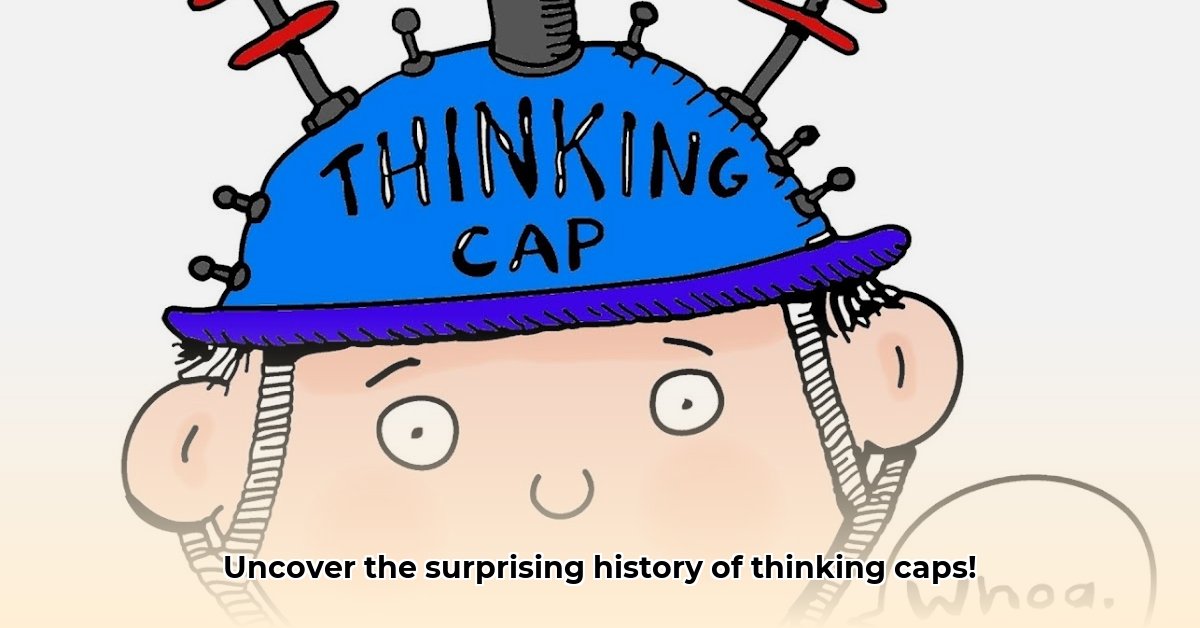The familiar phrase “put on your thinking cap” is more than just an idiom; it’s a window into the evolution of thought itself. This article delves into the rich history of the “thinking cap,” tracing its surprising journey from early iterations to modern usage. We’ll explore how this seemingly simple phrase reveals profound insights into how we conceptualize and express mental effort. For more on inventions impacting thought, see this interesting list of 2012 inventions.
From “Considering” to “Thinking”: A Cultural Shift in Headwear
The concept of a “thinking cap” didn’t materialize overnight. Its origins can be traced back to the 17th century, where variations like “considering cap” emerged. Shakespearean actor Robert Armin, among others, employed similar phrasing, establishing a connection between headwear and the act of contemplation. This early usage emphasized a more passive, reflective process, distinct from the active problem-solving we associate with “thinking” today. This subtle but significant shift in terminology mirrors a broader cultural transformation, reflecting a move towards a more proactive approach to mental challenges. The gradual transition from “considering” to “thinking,” gaining momentum in the late 19th and early 20th centuries, demonstrates how language adapts to evolving cultural values. The “thinking cap” became less about quiet contemplation and more about actively engaging with and conquering intellectual obstacles.
The “Thinking Cap” as Metaphor: Transforming the Mundane into the Meaningful
The enduring power of the “thinking cap” lies in its effectiveness as a metaphor. It takes an ordinary object – a hat – and imbues it with symbolic significance, representing focused mental effort. This simple yet potent imagery resonates deeply within us, readily understood even without the presence of a physical hat. Imagine grappling with a complex problem; the phrase “Time to put on my thinking cap!” feels like a natural, almost instinctive response. This metaphorical link between a physical action (putting on a hat) and a mental state (concentrated thought) allows us to express a complex internal process with concise and evocative language. The “thinking cap” becomes more than just headwear; it becomes a symbol of embracing intellectual challenges.
The Allure of the Imaginary: When Metaphors Outweigh Reality
While fictional accounts, such as The History of Little Goody Two-Shoes, describe fantastical hats designed to enhance intelligence, tangible historical evidence of such devices remains elusive. This lack of physical proof, however, doesn’t diminish the impact of the “thinking cap” metaphor. Its strength resides in its cultural resonance and widespread understanding, not its basis in reality. The power of metaphor stems from its ability to connect abstract concepts to concrete images, fostering a shared understanding that transcends literal interpretation.
The “Thinking Cap” in the Modern Lexicon: A Versatile Expression of Thought
The “thinking cap” continues to thrive in contemporary language, demonstrating remarkable versatility. It’s employed humorously, seriously, and even sarcastically, highlighting its adaptability and enduring relevance in our communication. Its widespread use underscores its value in expressing the nuances of mental effort. From casual conversations to formal discussions, the “thinking cap” remains a powerful tool for conveying the act of concentrated thought. Its adaptability across various contexts solidifies its place as a staple in modern communication.
Unraveling the Enigma: Future Explorations of the “Thinking Cap”
The “thinking cap” continues to intrigue and inspire further investigation. Its somewhat mysterious origins and evolution offer fertile ground for future research. Historians, linguists, and educators alike can delve deeper into the cultural and linguistic forces that shaped this ubiquitous phrase. Uncovering the full story of the “thinking cap” promises to reveal even more about how humans conceptualize, express, and ultimately engage with the power of thought.
- Discover Life in a Medieval Castle: Beyond Battles & Banquets: Unveiling Daily Life - August 2, 2025
- Scipio Africanus: Hannibal’s Nemesis: Rise, Fall, and Legacy - August 2, 2025
- Unveiling Superorganisms: Are Ant Colonies One Mind? - August 2, 2025















